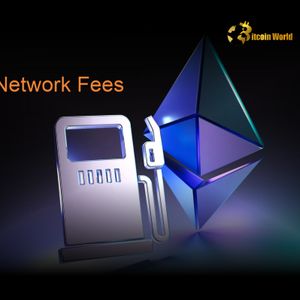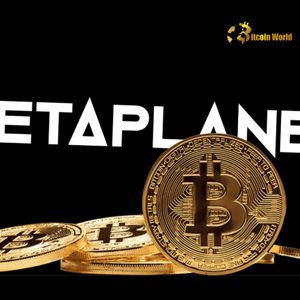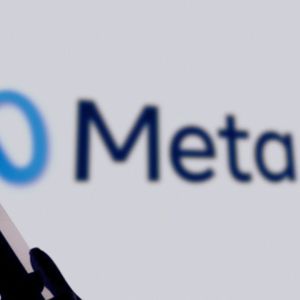BitcoinWorld Ethereum Fees Soar 12% as DeFi Activity Ignites Network Get ready to dive into the latest trends shaping the Ethereum network ! Recent data from Sentora (formerly IntoTheBlock), a leading on-chain data analytics firm, reveals a significant uptick in transaction costs. Weekly Ethereum fees have seen a notable increase, signaling heightened engagement across the platform. What’s Driving the Surge in Ethereum Fees? The primary catalyst behind the 12.2% jump in total weekly Ethereum fees is a clear surge in DeFi activity . As more users interact with decentralized applications – swapping tokens on DEXs, providing liquidity, lending, or borrowing – they generate transactions that compete for block space. This competition naturally drives up the price users are willing to pay to get their transactions confirmed quickly. Sentora’s report, shared on X, specifically highlighted this connection, noting that the total weekly fees collected reached $11.05 million. This figure represents the collective cost paid by users for processing transactions on the network over a seven-day period. Several factors within the decentralized finance ecosystem contribute to this increased activity: Token Swaps: Increased trading volume on decentralized exchanges (DEXs) like Uniswap and SushiSwap. Liquidity Provisioning: Users depositing or withdrawing assets from liquidity pools to earn yield. Lending and Borrowing: More interaction with protocols like Aave and Compound. New Protocol Launches: The introduction of new DeFi platforms or features attracting initial user engagement. NFT Market Activity: While not purely DeFi, significant NFT trading can also contribute to network congestion and fees. Understanding the relationship between DeFi activity and transaction costs is crucial for anyone participating in the crypto market . How Do Rising Ethereum Fees Impact Users and the Network? For everyday users and developers on the Ethereum network , rising fees present a double-edged sword. On one hand, higher fees can make small transactions economically unfeasible. Sending a small amount of Ether or performing a simple token transfer might cost more in gas than the value being transferred. However, there are also positive implications: Network Security: Higher fees incentivize validators (and formerly miners) to secure the network, as they earn a portion of these fees (post-EIP-1559, base fees are burned, but priority fees go to validators). Validator Revenue: Increased fee revenue makes staking Ethereum more attractive, potentially leading to more ETH being staked and further decentralizing the network. Protocol Sustainability: For some protocols, fee generation is part of their economic model. The increase in Ethereum fees is a direct indicator of demand for block space. High demand means the network is being used extensively, which is generally a sign of a healthy and active ecosystem. The on-chain data from Sentora provides a clear snapshot of this health metric. Comparing Recent Fee Trends with On-Chain Data Let’s look at the specific data point reported by Sentora. The 12.2% increase brought weekly fees to $11.05 million. While this is a significant jump from the previous week, it’s useful to put this into context using historical on-chain data . During peak bull markets or periods of intense NFT hype, weekly Ethereum fees have soared into the hundreds of millions of dollars. The current figure, while rising, is still relatively modest compared to those historical highs. This suggests the increase is likely driven by organic growth in DeFi activity rather than speculative frenzy. Here’s a simple representation of the change: Metric Previous Week Current Week Change Total Weekly Fees ~ $9.85 million $11.05 million +12.2% This table clearly shows the reported increase based on Sentora’s analysis of the Ethereum network . What Does This Mean for the Crypto Market? Rising Ethereum fees and increased DeFi activity on the Ethereum network have broader implications for the entire crypto market . Ethereum remains a foundational layer for much of the decentralized web, and its activity levels often serve as a bellwether for the health of the altcoin market, particularly those tokens related to DeFi and NFTs. Increased transaction costs on Ethereum also highlight the continued relevance and adoption of Layer 2 scaling solutions like Arbitrum, Optimism, Polygon (PoS), and others. Users seeking lower fees and faster transaction times are increasingly migrating their activity to these networks, which process transactions off the main Ethereum chain before settling them in batches. The data provided by firms like Sentora, through their on-chain data analysis, is vital for investors and participants in the crypto market to gauge network usage, identify trends, and understand the underlying economics driving asset values. Challenges and Solutions: Navigating Higher Ethereum Fees The primary challenge stemming from increased Ethereum fees is accessibility and cost-effectiveness for users. This is particularly true for those with smaller capital or those making frequent transactions. High fees can exclude users and push activity to competing blockchains. However, the ecosystem is actively developing and implementing solutions: Layer 2 Scaling: As mentioned, L2s offer significantly lower fees and faster speeds. Users can bridge assets to these networks to participate in DeFi at a fraction of the cost. Protocol Optimizations: Developers are constantly working to make smart contracts more gas-efficient. Fee Abstraction: Some dApps are exploring ways to abstract away gas fees from the user, perhaps by subsidizing them or bundling transactions. Alternative Networks: While Ethereum is dominant, the existence of other blockchains with different fee structures provides alternatives for users. The rise in fees, as indicated by the on-chain data , underscores the urgency and importance of these scaling solutions for the long-term health and growth of the Ethereum network and its role in the broader crypto market . Actionable Insights from On-Chain Data For users and investors, the increase in Ethereum fees driven by DeFi activity offers actionable insights based on on-chain data : Consider Layer 2s: If you are actively participating in DeFi or plan to, explore using Layer 2 networks to save on gas costs. Timing Transactions: Gas prices fluctuate based on network congestion. Use gas tracking tools to find periods of lower activity for non-urgent transactions. Batch Operations: If a protocol allows, try to bundle multiple actions into a single transaction to save on base costs. Monitor On-Chain Data: Keep an eye on reports from firms like Sentora/IntoTheBlock. Changes in fee levels and activity metrics can provide early signals about trends in the crypto market and the health of the Ethereum network . Understanding these dynamics, informed by reliable on-chain data , is key to navigating the evolving landscape of decentralized finance on Ethereum. Summary: A Healthy, Busy Network The 12.2% rise in weekly Ethereum fees to $11.05 million, as reported by Sentora, is a direct consequence of increased DeFi activity . While this leads to higher transaction costs for users, it fundamentally indicates a healthy and busy Ethereum network . The demand for block space reflects genuine usage and growth in decentralized applications. This trend has implications for the entire crypto market , highlighting the importance of scaling solutions and the value of analyzing on-chain data to understand market dynamics. As DeFi continues to evolve, monitoring these core network metrics will remain essential. To learn more about the latest crypto market trends, explore our articles on key developments shaping the Ethereum network and its role in decentralized finance. This post Ethereum Fees Soar 12% as DeFi Activity Ignites Network first appeared on BitcoinWorld and is written by Editorial Team

















